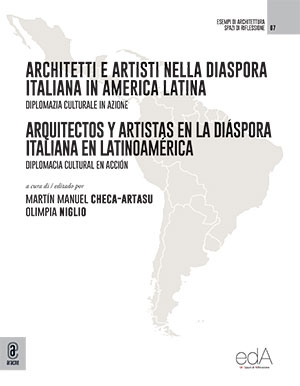DOI: 10.53136/979125994390310
Pagine: 234-255
Data di pubblicazione: Settembre 2021
Editore: Aracne
SSD:
ICAR/18
The global economic crisis that lasted during the 1930s, known as the Great Depression, had its origin in the United States after the stock market crash on October 29, 1929 (known as the Crac of 29 or Black Tuesday). The prosperity of the 1920s was transformed into workers’ strikes and protests, which led to the triumph of authoritarian regimes in many European countries, as Italy & Germany. In Latin American countries, this situation promoted a strengthening of the state’s role in the economy, the official promotion of local industry and a policy of import substitution. Argentina was no exception and with the coup d’état of September 6, 1930, the radical government of H. Irigoyen ended, and a time of violence, proscriptions and electoral fraud began. Even in this controversial context, the entry of modernity into the interior of the province of Buenos Aires had its impulse with the Public Works Plan implemented during the government of Dr. Manuel Fresco (1936-1940). The construction of roads, bridges, canals and aerodromes, together with schools and communal equipment works in the provincial territory, undoubtedly provided a better quality of life for Buenos Aires residents, along with work and economic reactivation. The Municipal Public Works Bonds Law of 1928 was the instrument that made possible the completion of the works, since it allowed each Municipality, if it did not have its own technical equipment, to hire professionals and construction companies for the execution of its programs. In this framework appears the Engineer Arch. Francisco Salamone, planning and directing monumental municipal headquarters, markets, slaughterhouses, cemeteries, squares, parks, with an innovative construction system in the towns of the province where he left his mark.
Keywords: Modernity, Monumentality, Precast concrete.


